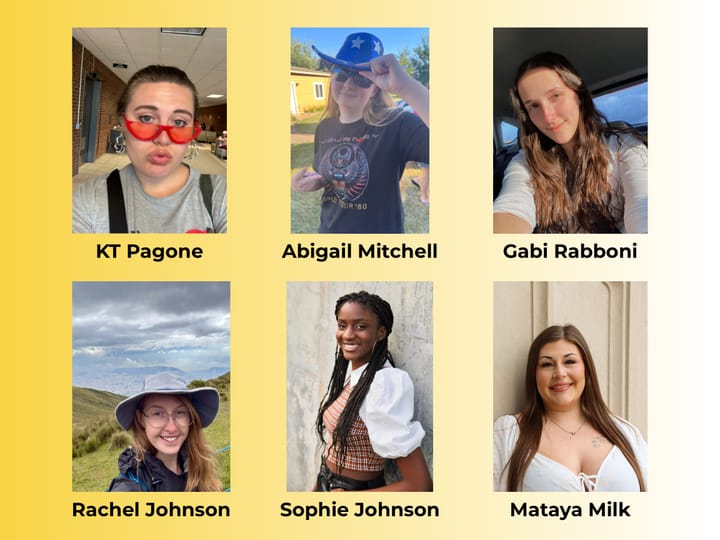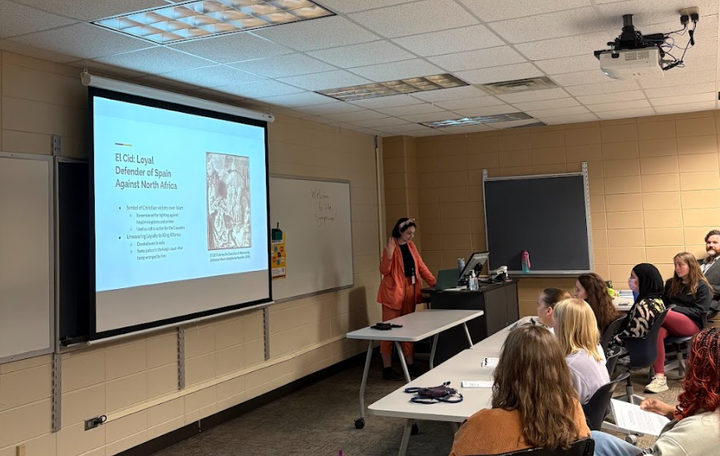Look up, birdwatching enriches campus life
Above, a Red-tailed Hawk rests on a branch outside the admissions building. Photo by Noah Wicks.
When I first spied a Black-Capped Chickadee on campus, I freaked.
For two weeks, I woke up each morning to a cacophony of two-note “fee-bee” songs mixed with “chickadee-dee-dee” calls of my favorite backyard bird. I’d keep my neck craned and eyes peeled while walking to biology class, hoping to spot a black cap with fluffy white cheeks.
The first week, the songs sounded hopeful. By the second, each “fee-bee” was a hit to my heartstrings and confidence as a budding bird enthusiast. I was ready to surrender. Then one April afternoon, I looked up to see the smallest of black-capped birds perched just 15 feet away. He opened his beak, gave a quick “chickadee-dee-dee” and flew out of sight.
In short, my day was made.
According to Amy Lewis, biology professor and ornithologist, campus is filled with all kinds of birds, including classic American Robins, chestnut-crowned Chipping Sparrows, red-headed House Sparrows, American Crows, cigar-shaped Chimney Swifts, European Starlings and the occasional Red-tailed, Cooper’s or Sharp-shinned Hawk.
And let’s not forget the pair of Mallards who return each year to raise their ducklings on the Augie Lake outside Bergsaker Hall.
Aside from buying a small bird identification book and cheap pair of binoculars, the best way to start birding, according to Lewis, is to simply pay attention to your surroundings, whether that includes walking to class or sitting outside for lunch.
“If you open your eyes and your ears to the life that’s out there, there’s plenty of bird life,” Lewis said. “It’s really neat, no matter where you are, just to pay attention to what’s there.”
While birding starts as a hobby, it can also indicate the health of your ecosystem. A good variety of birds can mean there aren’t many pollutants in the area. However, if only House Sparrows and Rock Pigeons are hanging around, it’s a good warning sign that something might be wrong.
Lewis noted that while campus has a good variety of birds, there are a few things students can do to make campus more comfortable for their feathered tenants. First, pick up any trash you might notice. Birds will search high and low for different food sources or nesting materials, but some packaging products and chemicals can be toxic to wildlife.
If you’re looking to go the extra mile, place a bird feeder or small bowl of water outside a window. This can provide an extra energy source for your local Blue Bird or Red-Winged Blackbird and ensure an occasional visit throughout the week (as long as you keep their favorite seeds or suet stocked).
Learning about birds, their distinguishing features and how to live alongside them—even just on campus—makes walking from Humanities to the Froiland Science Center more interesting.

Birds, oh so slowly, become more than just “birds”—they become blackbirds, sparrows, warblers and finches. Each starts to have a distinct look and sound. Gradually, your interactions within the ecosystem become more complete, intentional and even empathetic.
But trust me, birding doesn’t come naturally to most folks. Sometimes, birds hide their best features behind tree trunks or fly away before anyone can grab their binoculars. Sometimes, the 17 different types of sparrows you’ve been studying all start blending together. And sometimes, you stare at a tree for five minutes, thinking you’ve heard a House Finch but it’s just an angry squirrel.
While we might not all become ornithologists or even know a Northern Cardinal from a Blue Jay, learning about your niche or role within the environment can impact both your lifestyle and worldview.
In short, by lifting your gaze from the sidewalk to the treetops, you might just break the concrete monotony and spot a chickadee instead.




